Uncover the Vernacular Pottery Styles Around the World
Pottery is not just a craft; it’s a language spoken through clay, a narrative shaped by hands that have been working with earth for centuries. Across the globe, vernacular pottery styles tell stories of culture, tradition, and community. From the sun-drenched deserts of Africa to the lush landscapes of Asia and the artistic hubs of Europe, each piece of pottery is a testament to the unique identity of the people who create it. Have you ever wondered how a simple bowl can encapsulate the history and values of a community? Let’s dive into the rich tapestry of pottery styles that reflect the heart and soul of different cultures.
The beauty of vernacular pottery lies in its diversity. Each region has its own unique methods, materials, and motifs that speak volumes about its heritage. For instance, the vibrant hues and intricate patterns of North African Berber pottery are not just aesthetically pleasing; they represent a deep connection to the land and the traditions of nomadic tribes. Similarly, the delicate porcelain of Asian pottery showcases the meticulous craftsmanship and the philosophical underpinnings of cultures like those in China and Japan. It’s fascinating to think that these creations, while functional, also serve as a canvas for artistic expression and cultural storytelling.
As we explore these styles, we’ll uncover the historical significance of pottery, tracing its evolution from ancient times to contemporary practices. Pottery has been a crucial part of human civilization, serving not only practical purposes—like cooking and storage—but also playing a vital role in rituals and ceremonies. Can you imagine a wedding without a beautifully crafted pottery piece as a gift? Or a community gathering without traditional pottery that carries the essence of shared meals? Pottery, in its many forms, is woven into the very fabric of life.
In our journey, we’ll also take a closer look at the regional variations that make pottery a global phenomenon. Each geographical area boasts its own distinct characteristics, influenced by local resources and cultural narratives. From the robust stoneware of Europe to the delicate, intricate designs of Asian pottery, we’ll appreciate the craftsmanship that goes into every piece. With such a rich history and cultural significance, pottery is more than just art; it’s a reflection of identity and community.
Are you ready to embark on this exploration of vernacular pottery styles? Let’s uncover the artistry, tradition, and cultural significance embedded in these functional creations, and discover how they continue to evolve while maintaining their roots in history and community.
Pottery has played a crucial role in human civilization, serving both practical and ceremonial purposes. This section delves into its evolution and the cultural narratives that accompany various styles across different regions.
Different regions boast unique pottery styles influenced by local resources and traditions. This section examines the distinct characteristics of pottery from various geographical locations, showcasing the diversity of techniques and designs.
African pottery is rich in history and symbolism, often reflecting the cultural practices of different tribes. This section highlights notable styles and techniques, including the use of natural pigments and intricate designs.
Berber pottery features bold colors and geometric patterns, often produced by nomadic tribes. This subsection explores the significance of these designs and the materials used in their creation.
Sub-Saharan pottery showcases a variety of styles, often emphasizing functionality. This subsection discusses the cultural importance of pottery in daily life and rituals within various communities.
Asian pottery encompasses a wide range of styles, from delicate porcelain to robust stoneware. This section investigates the traditional methods and cultural contexts that define pottery in countries like China and Japan.
European pottery has evolved through various artistic movements, reflecting social and historical changes. This section examines notable styles, including Delftware and Majolica, and their influence on modern ceramics.
Majolica pottery is known for its vibrant colors and intricate designs, often depicting scenes from mythology or nature. This subsection explores its historical roots and contemporary relevance in Italian culture.
Talavera pottery is characterized by its distinctive glaze and patterns. This subsection discusses its origins and the craftsmanship involved in creating these beautiful ceramic pieces.
Pottery often serves as a medium for expressing cultural identity. This section explores how different communities use pottery to convey their heritage, beliefs, and artistic expressions through various styles.
Modern artisans are reviving traditional pottery techniques while incorporating contemporary designs. This section highlights the resurgence of vernacular pottery and the innovative approaches taken by today's potters to keep the craft alive.
- What is vernacular pottery? Vernacular pottery refers to traditional pottery styles that are specific to a particular region or culture, often created using local materials and techniques.
- Why is pottery important in cultural identity? Pottery serves as a reflection of a community's heritage, beliefs, and artistic expressions, making it a vital part of cultural identity.
- How has pottery evolved over time? Pottery has evolved from purely functional items to intricate art pieces that represent cultural narratives and artistic expressions.
- What are some common techniques used in pottery? Common techniques include hand-building, wheel-throwing, glazing, and firing methods that vary by region and style.
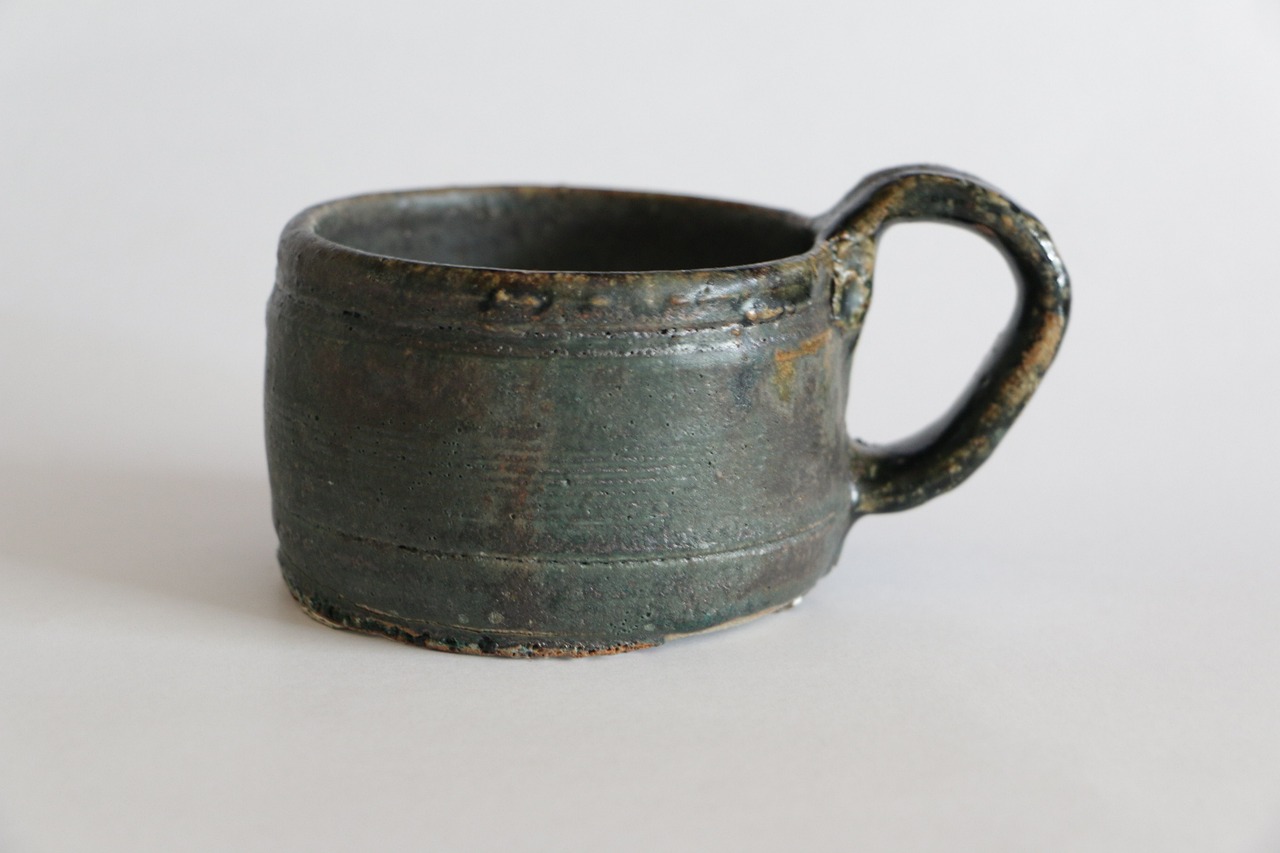
The Historical Significance of Pottery
Pottery is not just a craft; it is a window into our shared human history. From the earliest days of civilization, pottery has served as a vital tool for survival, a canvas for artistic expression, and a vessel for cultural storytelling. Imagine our ancestors, sitting around a fire, crafting clay into functional items that would hold their food and water. These creations were not merely utilitarian; they were imbued with meaning and purpose, reflecting the values and beliefs of the communities that made them.
The evolution of pottery can be traced back thousands of years, with some of the oldest known examples dating to around 29,000 BC in what is now the Czech Republic. As societies developed, so did their pottery styles, influenced by local resources, climate, and cultural exchanges. Each region's pottery tells a story, revealing insights into the daily lives, religious practices, and artistic sensibilities of its people.
Throughout history, pottery has played a multifaceted role, including:
- Practical Use: Pottery has been essential for storing food and liquids, cooking, and serving meals.
- Ceremonial Functions: Many cultures have used pottery in rituals and ceremonies, creating pieces that are not meant for everyday use but hold significant spiritual value.
- Artistic Expression: Potters have long utilized their craft to express creativity, often incorporating intricate designs and techniques that reflect their cultural heritage.
As we explore the historical significance of pottery, we can categorize its development into several key periods:
| Period | Characteristics | Notable Examples |
|---|---|---|
| Prehistoric | Simple forms, hand-built techniques, basic decoration | Venus of Dolní Věstonice |
| Ancient Civilizations | Wheel-thrown pottery, advanced glazing techniques | Greek amphorae, Roman terra sigillata |
| Medieval | Regional styles emerge, decorative glazes | Majolica, Delftware |
| Modern Era | Fusion of traditional and contemporary styles, artistic movements | Studio pottery, craft revival |
As we can see, pottery has undergone significant transformations over the centuries, each era contributing to the rich tapestry of its history. The significance of pottery extends beyond its physical form; it encapsulates the essence of human experience, connecting generations through a shared appreciation for craftsmanship and cultural identity. Today, as we continue to explore and revive traditional pottery techniques, we are not just preserving a craft; we are honoring the stories and traditions that have shaped our world.
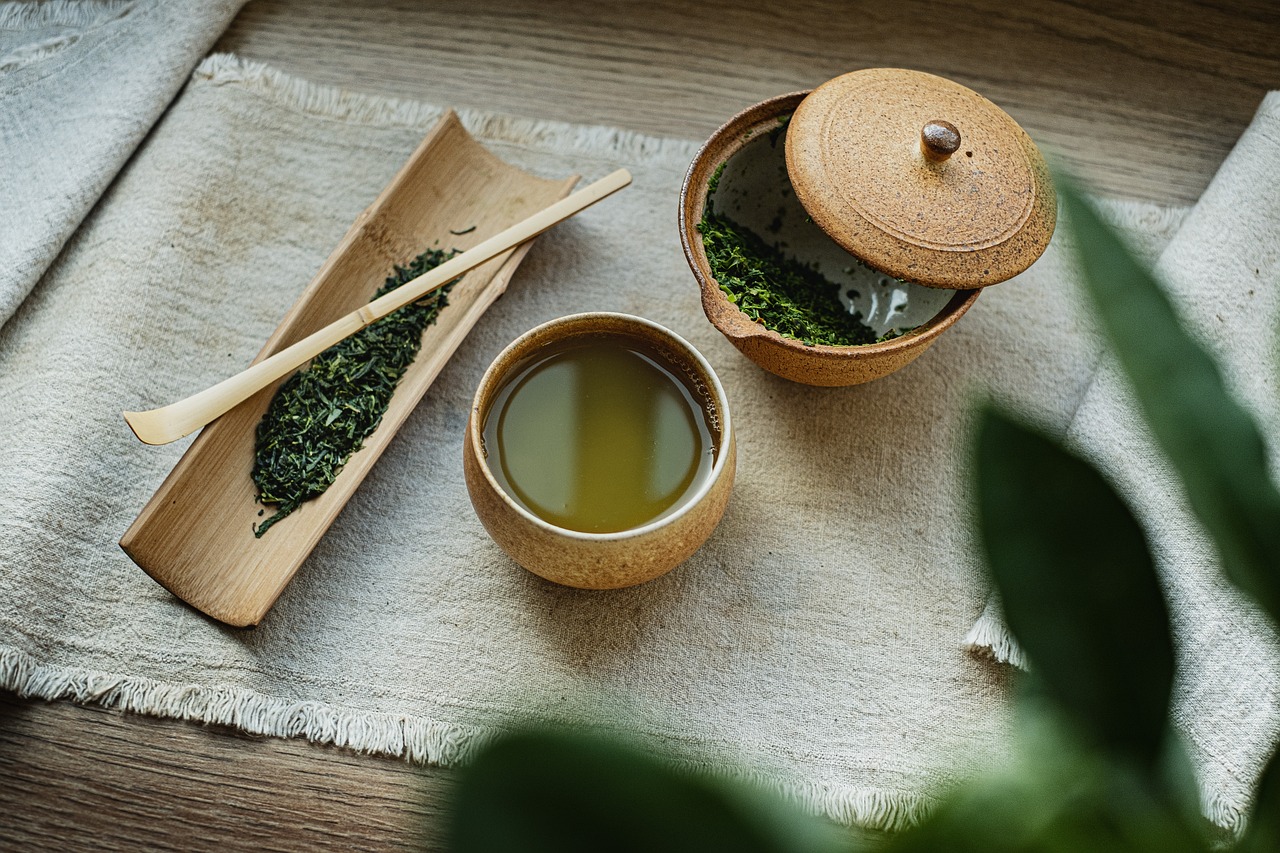
Regional Variations in Pottery Styles
Pottery is not just about clay and fire; it’s a canvas where culture, history, and tradition come together. Across the globe, different regions boast unique pottery styles that are shaped by local resources, cultural practices, and the creativity of artisans. Imagine walking through a bustling market in Oaxaca, Mexico, where the vibrant colors of Talavera pottery catch your eye, or visiting a serene village in Japan where the subtle elegance of Raku wares tells stories of ancient tea ceremonies. Each piece of pottery is a reflection of its environment and the people who create it.
In Africa, for instance, pottery is often intertwined with daily life and rituals, showcasing the rich symbolism and craftsmanship of various tribes. In contrast, Asian pottery is renowned for its intricate techniques and aesthetic appeal, with countries like China and Japan leading the way in fine porcelain and stoneware. Meanwhile, in Europe, pottery has evolved through artistic movements, mirroring the social and historical changes of the times.
Let’s take a closer look at how geography influences pottery styles around the world. The table below highlights some of the most significant regional variations:
| Region | Notable Styles | Key Characteristics |
|---|---|---|
| Africa | Berber, Sub-Saharan | Natural pigments, geometric patterns, functional designs |
| Asia | Porcelain, Raku | Delicate finishes, intricate glazes, cultural significance |
| Europe | Delftware, Majolica | Vibrant colors, historical motifs, artistic expressions |
In Africa, pottery is often more than just a practical item; it’s a storytelling medium. Each piece can signify a tribe’s history, beliefs, and social status. For example, Berber pottery from North Africa often features bold colors and geometric patterns, symbolizing the nomadic lifestyle of its creators. In Sub-Saharan Africa, pottery is frequently created for everyday use, emphasizing functionality while still showcasing artistic flair.
When we shift our gaze to Asia, we encounter a rich tapestry of styles that vary significantly from one country to another. Chinese porcelain, known for its strength and beauty, has been revered for centuries, while Japanese Raku pottery emphasizes simplicity and spontaneity, often used in tea ceremonies. These techniques are not just about aesthetics; they carry deep cultural significance, connecting the artisans with their heritage.
European pottery styles, such as Delftware from the Netherlands and Majolica from Italy, reflect the continent's artistic movements and historical narratives. Delftware, with its iconic blue and white designs, tells the story of trade and cultural exchange, while Majolica is celebrated for its vibrant colors and intricate designs that often depict scenes from mythology or nature.
In summary, the regional variations in pottery styles across the globe are a testament to the incredible diversity of human creativity. Each piece serves as a reminder of the cultural significance and unique techniques that define the communities producing them. Whether it’s the bold patterns of African pottery or the delicate craftsmanship of Asian ceramics, these creations offer a glimpse into the heart and soul of their respective cultures.
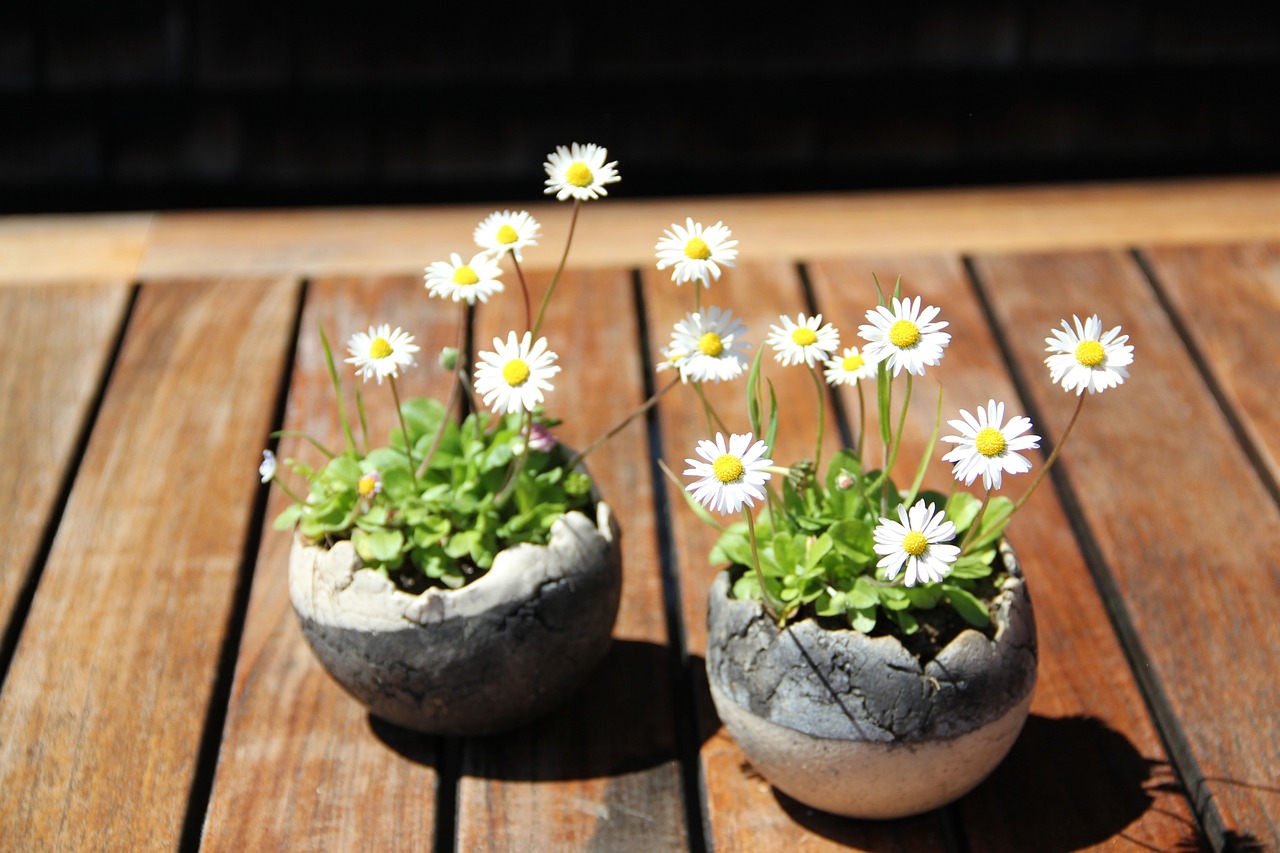
African Pottery Traditions
African pottery is not just about creating functional objects; it is a vibrant tapestry of history, culture, and artistry. Each piece tells a story, reflecting the values, beliefs, and daily lives of the communities that produce them. From the intricate designs of the Maasai in East Africa to the robust styles of the Zulu in Southern Africa, pottery serves as a canvas for cultural expression. The use of natural materials, such as clay and pigments, connects these artisans to their ancestors and the earth itself.
One of the most fascinating aspects of African pottery is the symbolism embedded within the designs. Potters often incorporate geometric patterns and natural motifs that hold specific meanings. For instance, the spiral might represent the journey of life, while certain colors can signify fertility or prosperity. These elements are not random; they are steeped in tradition and are passed down through generations, making each piece a unique artifact of cultural heritage.
Moreover, the pottery-making process itself is a communal activity. In many regions, women play a central role in crafting these beautiful items, often gathering in groups to share stories and techniques. This social aspect of pottery-making fosters a sense of community and continuity, bridging the gap between the past and the present. The skills required to create these works of art are honed over years, with each potter developing a distinctive style that reflects their personal and cultural identity.
| Region | Notable Styles | Materials Used |
|---|---|---|
| North Africa | Berber Pottery | Clay, natural pigments |
| West Africa | Yoruba Pottery | Clay, ash glazes |
| East Africa | Maasai Pottery | Clay, plant-based dyes |
| Southern Africa | Zulu Pottery | Clay, mineral pigments |
In addition to being functional, African pottery often plays a role in rituals and ceremonies. For example, certain vessels are used during weddings, funerals, and other significant life events, symbolizing the connection between the living and the spiritual world. The act of creating pottery is, therefore, not merely a craft but a sacred tradition that celebrates life and community.
As we explore the vast landscape of African pottery traditions, it becomes clear that these creations are much more than mere objects. They are cultural artifacts that embody the essence of the communities that produce them. In a world increasingly driven by mass production and globalization, the artistry and significance of African pottery remind us of the importance of preserving cultural heritage and embracing the stories woven into each piece.
- What materials are commonly used in African pottery?
African pottery typically uses local clay, natural pigments, and sometimes plant-based dyes for decoration. - Are there specific symbols in African pottery?
Yes, many designs incorporate symbols that represent various aspects of life, such as fertility, prosperity, and the journey of life. - Who typically makes African pottery?
In many communities, women are the primary potters, often working together in groups to share techniques and stories. - What role does pottery play in African culture?
Pottery serves both functional and ceremonial purposes, often being used in significant life events and rituals.
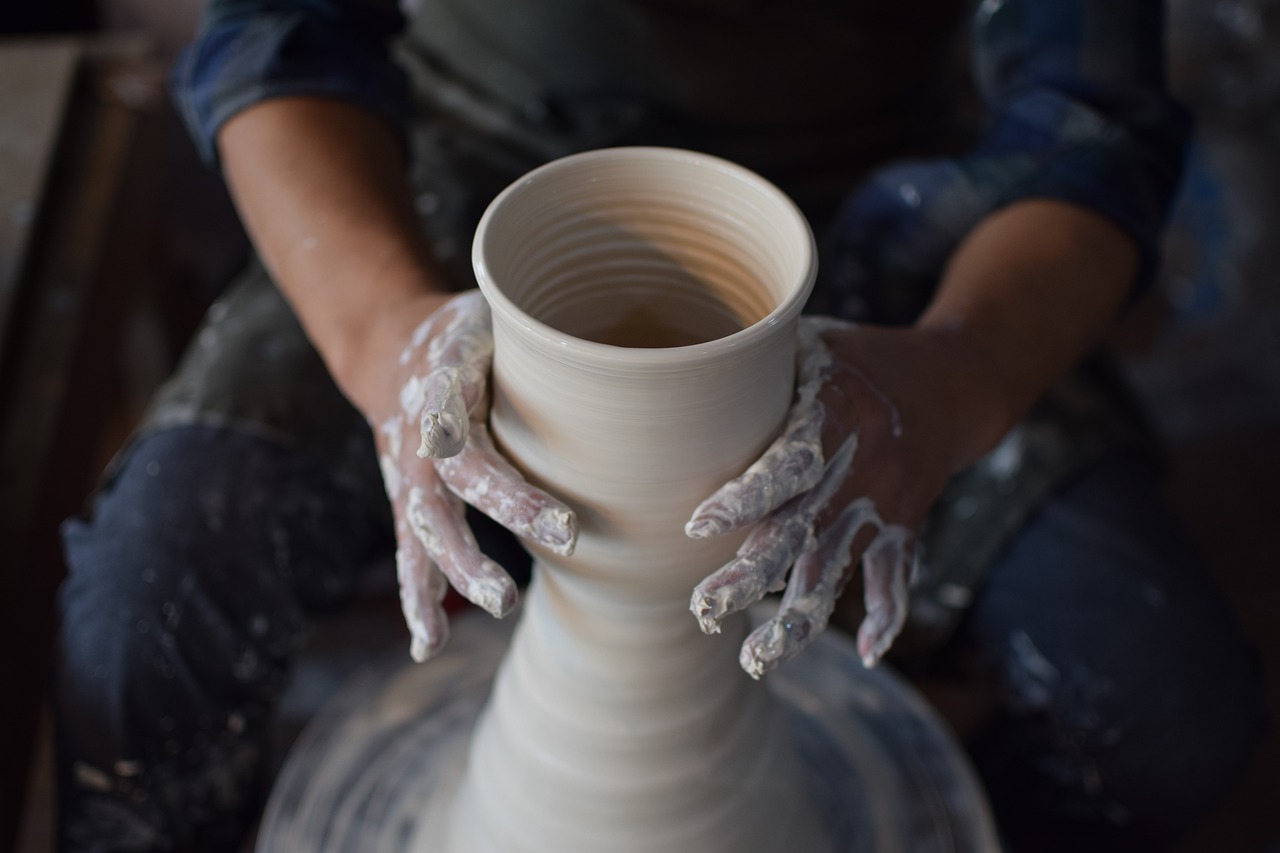
North African Berber Pottery
North African Berber pottery is a stunning testament to the rich cultural heritage of the Berber people, who have inhabited the mountainous and desert regions of North Africa for centuries. This pottery is not merely functional; it is a vibrant expression of identity, history, and artistry. The bold colors and intricate geometric patterns that adorn these ceramic pieces tell stories of the land, the people, and their traditions. Each item is crafted with a deep respect for the materials and techniques passed down through generations, creating a beautiful fusion of utility and art.
One of the most striking features of Berber pottery is its use of natural pigments derived from local minerals and plants. These pigments are often combined with clay sourced from the surrounding environment, resulting in a unique palette of earthy tones and vibrant hues. The artisans use traditional methods, including hand-coiling and firing in open kilns, which not only preserves the authenticity of the craft but also connects the potters to their ancestors. The process is labor-intensive, requiring skill and patience, but the end results are breathtaking pieces that serve both everyday needs and ceremonial purposes.
The geometric patterns found on Berber pottery are more than just decorative; they hold significant meaning within the culture. These designs often symbolize various aspects of life, such as fertility, protection, and the connection between the earth and the sky. Each tribe has its own distinctive motifs, which can be recognized by those familiar with Berber art. For instance, a pot adorned with zigzag lines might represent the paths of the ancestors, while circular shapes could symbolize unity and continuity. This deep connection between art and meaning makes Berber pottery a fascinating subject for collectors and cultural enthusiasts alike.
In addition to their aesthetic appeal, Berber pottery pieces are often used in daily life, showcasing the practicality of these creations. From cooking vessels to storage jars, each piece is designed to meet the needs of the community. The use of pottery in traditional Berber households reflects a lifestyle that values sustainability and craftsmanship. As such, these items are not just artifacts; they are integral to the cultural fabric of the Berber people.
Moreover, the revival of interest in traditional crafts has led to a resurgence in Berber pottery. Modern artisans are now blending traditional techniques with contemporary designs, creating unique pieces that appeal to a broader audience. This fusion of old and new not only helps preserve the craft but also opens up new avenues for artistic expression. As a result, Berber pottery continues to evolve while remaining deeply rooted in its cultural significance.
To summarize, North African Berber pottery is a vibrant and essential part of the Berber culture, embodying a rich history, intricate artistry, and practical use. Its unique characteristics and the stories behind its creation make it a fascinating subject for anyone interested in the intersection of art and culture. Whether you are a collector, an artist, or simply an admirer of beautiful craftsmanship, Berber pottery offers a glimpse into a world where tradition and innovation coexist harmoniously.
- What materials are used in Berber pottery?
Berber pottery is typically made from locally sourced clay and natural pigments derived from minerals and plants.
- What are the common designs found on Berber pottery?
Common designs include geometric patterns that symbolize various aspects of life, such as fertility and protection, with each tribe having its own distinctive motifs.
- How is Berber pottery made?
Berber pottery is traditionally made using hand-coiling techniques and fired in open kilns, preserving the authenticity of the craft.
- What is the cultural significance of Berber pottery?
Berber pottery serves both practical and ceremonial purposes, reflecting the identity and heritage of the Berber people.
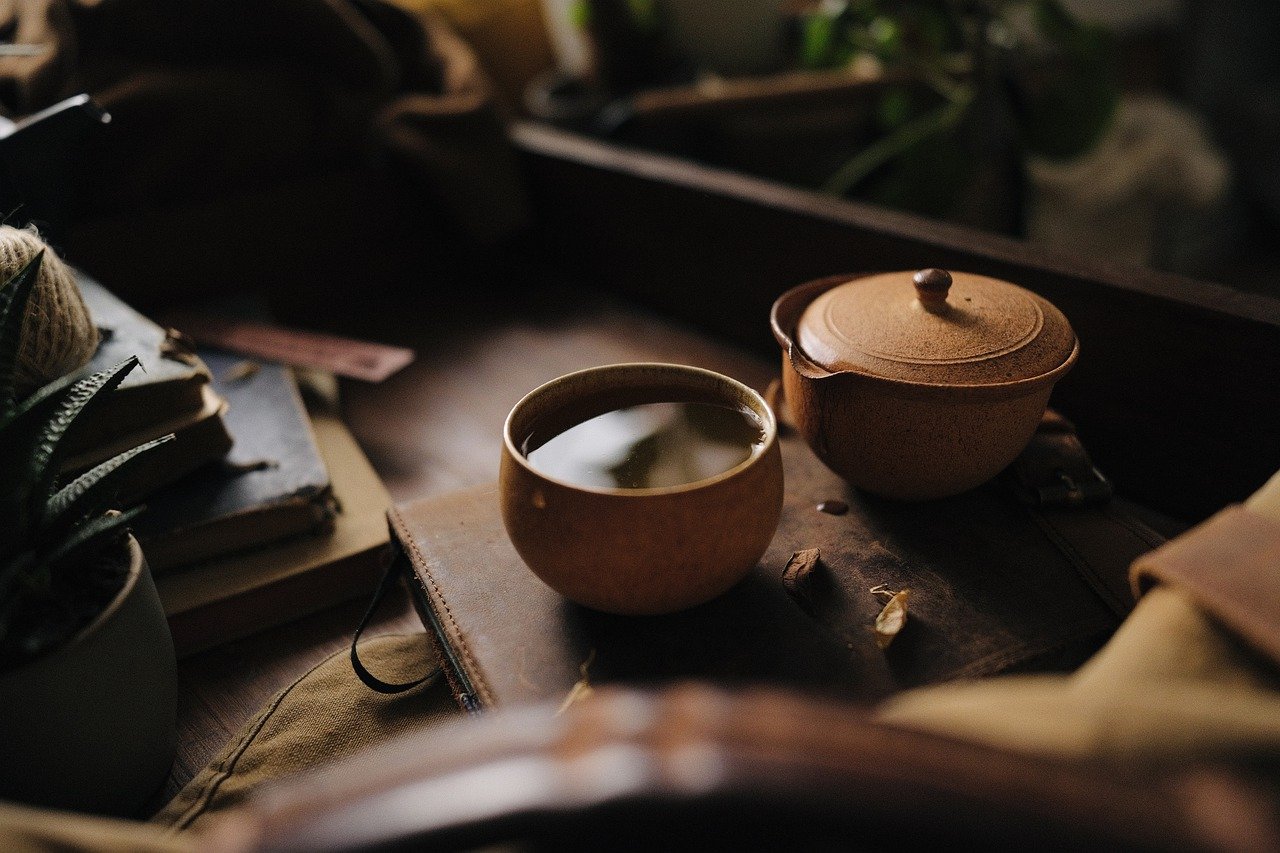
Sub-Saharan African Pottery
Sub-Saharan African pottery is a fascinating tapestry woven from the rich cultural heritage and diverse practices of various communities across the region. This pottery is not merely functional; it serves as a reflection of the identity, beliefs, and everyday lives of the people who create it. Each piece tells a story, whether it's a simple cooking pot or an intricately designed ceremonial vessel. The techniques and styles vary widely, influenced by local resources, traditions, and the needs of the community.
One of the most striking features of Sub-Saharan pottery is its emphasis on functionality. Unlike the decorative pottery often found in other parts of the world, Sub-Saharan pieces are crafted with practical purposes in mind. They are designed for everyday use, from cooking and storage to ceremonial functions. This practicality does not detract from their beauty; instead, it enhances it, as artisans use their creativity to transform utilitarian objects into works of art.
Moreover, the cultural significance of pottery in Sub-Saharan Africa cannot be overstated. Pottery plays a vital role in various rituals and ceremonies, often symbolizing important life events such as births, marriages, and funerals. For instance, in many communities, the creation of a new pot is accompanied by rituals that bless the pot for its intended use, signifying a deep connection between the object and the community's spiritual beliefs.
Artisans often use locally sourced materials, which adds another layer of uniqueness to each piece. The clay is typically hand-formed and may be decorated with natural pigments derived from plants and minerals. The firing techniques also vary, with some communities employing traditional open-fire methods, while others use kilns to achieve specific finishes. This diversity in techniques results in a wide array of styles and designs, making each region's pottery distinct.
| Region | Common Techniques | Typical Uses |
|---|---|---|
| West Africa | Coiling and hand-building | Cooking pots, storage jars |
| East Africa | Wheel-throwing and glazing | Ceremonial vessels, decorative items |
| Southern Africa | Open firing with natural pigments | Functional pots, artistic expressions |
In summary, Sub-Saharan African pottery is a vibrant expression of the region's cultural identity and artistic ingenuity. It serves as a reminder of the deep-rooted traditions that continue to thrive in modern society, showcasing the remarkable ability of artisans to blend functionality with artistry. As we explore the diverse pottery styles across Sub-Saharan Africa, we uncover not just the craftsmanship but also the stories and cultural narratives that have been passed down through generations.
- What materials are commonly used in Sub-Saharan African pottery?
Sub-Saharan African pottery is typically made from locally sourced clay, often decorated with natural pigments derived from plants and minerals. - How does pottery reflect cultural identity in Sub-Saharan Africa?
Pottery serves as a medium for expressing cultural beliefs, rituals, and everyday life, making it an integral part of community identity. - What types of pottery are most common in Sub-Saharan Africa?
Common types include cooking pots, storage jars, and ceremonial vessels, each designed for specific functions within the community.

Asian Pottery Techniques
When we think of Asian pottery, a world of vibrant colors, intricate designs, and rich traditions comes to mind. Countries like China and Japan have long been revered for their unique pottery techniques that not only serve functional purposes but also embody deep cultural significance. The evolution of these techniques illustrates a fascinating journey through time, reflecting the artistic expressions and practical needs of various communities.
One of the most notable techniques in Asian pottery is the creation of porcelain, which originated in China around the Tang Dynasty (618-907 AD). This fine, white clay is known for its strength and translucence, making it highly sought after. The process of making porcelain involves a meticulous method of mixing kaolin clay with feldspar and quartz, followed by a high-temperature firing process. The results are stunning pieces that can range from simple tableware to elaborate decorative items. The attention to detail in porcelain is often breathtaking, showcasing delicate patterns and glazes that can tell stories of ancient traditions.
In contrast, Japanese pottery often emphasizes the beauty of imperfection, a concept known as wabi-sabi. This philosophy celebrates the natural aging process and the unique characteristics of each piece. Techniques such as Raku pottery, which involves removing pieces from the kiln while they are still hot and placing them in combustible materials, create unpredictable and beautiful effects. The result is a stunning array of colors and textures that are truly one-of-a-kind.
Moreover, the use of glazes in Asian pottery is an art form in itself. Various glazes can be employed to achieve different effects, from the glossy finishes of celadon to the earthy tones of ash glazes. Each region has its own signature colors and styles, often influenced by local materials and cultural traditions. For instance, Chinese celadon pottery is known for its jade-like green glaze, while Korean pottery often features a beautiful white slip under a transparent glaze, showcasing the clay's natural beauty.
To give you a clearer picture, here's a quick overview of some prominent Asian pottery techniques:
| Technique | Origin | Characteristics |
|---|---|---|
| Porcelain | China | Fine, white, and translucent; often intricately decorated. |
| Raku | Japan | Unpredictable colors and textures; emphasizes imperfection. |
| Celadon | China | Jade-like green glaze; smooth and glossy finish. |
| Stoneware | Various | Durable and versatile; often used for functional ware. |
In addition to these techniques, many Asian cultures incorporate pottery into their rituals and celebrations. For instance, in Japan, the art of tea ceremony is deeply intertwined with pottery, where the choice of tea bowl can significantly influence the experience. Each bowl tells a story, reflecting the potter's skill and the aesthetics valued in Japanese culture.
As we explore the world of Asian pottery, it becomes clear that these techniques are not merely about creating beautiful objects; they are about preserving traditions, telling stories, and connecting with the past. Each piece carries with it the essence of the culture it represents, making Asian pottery a profound expression of artistry and heritage.
- What is the main difference between porcelain and stoneware? Porcelain is made from finer clay and fired at higher temperatures, resulting in a more delicate and translucent finish, while stoneware is denser and more durable.
- What does wabi-sabi mean in pottery? Wabi-sabi is a Japanese aesthetic that finds beauty in imperfection and transience, celebrating the unique characteristics of handmade pottery.
- How does the firing process affect pottery? The firing process determines the strength, color, and finish of the pottery. Different temperatures and atmospheres during firing can lead to various effects and styles.

European Pottery Styles
When you think of European pottery, a vibrant tapestry of styles comes to mind, each with its own unique story and cultural significance. Over centuries, pottery in Europe has evolved, influenced by artistic movements, historical events, and the rich traditions of various regions. From the delicate porcelain of France to the robust stoneware of Germany, European pottery reflects a fascinating blend of artistry and functionality.
One of the most notable styles is Delftware, originating from the Netherlands in the 16th century. This blue and white pottery is characterized by intricate hand-painted designs, often featuring floral patterns, landscapes, and scenes from Dutch life. The technique itself was inspired by Chinese porcelain, but the Dutch artisans added their own flair, creating a distinctive style that remains popular today. Delftware is not just about aesthetics; it tells the story of a nation’s trade routes and cultural exchanges.
In contrast, Italy boasts the vibrant Majolica pottery, known for its bright colors and intricate designs. Majolica pieces often depict scenes from mythology, nature, or everyday life, showcasing the skills of artisans who have perfected their craft over generations. The historical roots of Majolica can be traced back to the Renaissance, when artists began experimenting with tin-glazing techniques to create stunning visual effects. This pottery is not merely functional; it is a canvas for storytelling, reflecting the rich cultural heritage of Italy.
Another fascinating style is Spanish Talavera, which stands out with its distinctive glazes and patterns. Originating from the city of Talavera de la Reina, this pottery is known for its vibrant colors and intricate designs that often incorporate motifs from nature and traditional Spanish culture. The craftsmanship involved in creating Talavera pottery is meticulous, requiring skilled artisans to hand-paint each piece. This style not only serves practical purposes but also acts as a medium for cultural expression, celebrating the history and artistry of Spain.
To illustrate the diversity of European pottery styles, consider the following table that highlights some key characteristics:
| Style | Origin | Characteristics |
|---|---|---|
| Delftware | Netherlands | Blue and white hand-painted designs, floral patterns |
| Majolica | Italy | Bright colors, mythological and nature scenes |
| Talavera | Spain | Vibrant glazes, intricate hand-painted patterns |
Each of these styles not only showcases the technical skills of the potters but also the cultural narratives that are woven into the very fabric of their creation. The evolution of pottery in Europe is a testament to the region's rich history and the enduring nature of artisanal craftsmanship. As you explore these styles, you’ll find that they are more than just decorative items; they are reflections of cultural identity and heritage.
In today’s world, the appreciation for traditional European pottery continues to thrive, with modern artisans reviving these age-old techniques while infusing contemporary designs. This resurgence not only keeps the craft alive but also allows for a unique blend of the past and present, ensuring that the stories and artistry behind these beautiful creations are passed down to future generations.
- What is the significance of pottery in European culture? Pottery serves as a medium for artistic expression and cultural identity, reflecting the history and traditions of various regions.
- How has European pottery evolved over time? European pottery has evolved through various artistic movements and historical events, leading to diverse styles that showcase local resources and craftsmanship.
- What are some popular European pottery styles? Notable styles include Delftware from the Netherlands, Majolica from Italy, and Talavera from Spain, each with unique characteristics and cultural significance.

Italian Majolica
Italian Majolica is a stunning form of pottery renowned for its vibrant colors and intricate designs, often depicting scenes from mythology, nature, and everyday life. Originating in the 15th century, this traditional ceramic art form has its roots in the Moorish influence on Italian craftsmen, particularly in regions like Tuscany and Umbria. The term "Majolica" itself is derived from the Spanish island of Majorca, where similar pottery was first produced. Over time, the craft evolved, leading to the unique styles we see today.
What makes Majolica truly fascinating is not just its aesthetic appeal but also the technique behind its creation. Artisans typically start with a clay body that is fired at a high temperature. After the initial firing, the pieces are coated with a white tin glaze, which serves as a canvas for the colorful decorations. The colors used in Majolica are derived from metal oxides, allowing for a vibrant palette that can range from deep blues to fiery reds. Once decorated, the pottery is fired again to set the colors, resulting in a glossy finish that enhances the visual impact of the artwork.
Majolica is characterized by its distinctive motifs and patterns. Some of the most common themes include:
- Floral Designs: Intricate flowers and leaves that symbolize beauty and nature.
- Mythological Scenes: Depictions of gods, goddesses, and mythical creatures, often inspired by ancient Roman and Greek mythology.
- Everyday Life: Scenes that capture the essence of daily activities, showcasing the cultural heritage of the region.
This pottery is not merely decorative; it serves practical purposes as well. Majolica pieces are often used in dining settings, with beautifully crafted plates, bowls, and serving dishes that elevate any meal. The craftsmanship involved in creating Majolica is a testament to the skill and dedication of the artisans, many of whom have been practicing their craft for generations.
Today, Majolica remains a vibrant part of Italian culture, with contemporary artists reviving traditional techniques while adding their personal flair. This blend of the old and the new keeps the art form alive, ensuring that Majolica continues to be appreciated both locally and globally. Whether it’s a stunning vase gracing a modern home or a traditional plate adorning a rustic table, Italian Majolica is a celebration of creativity, history, and cultural identity.
| Question | Answer |
|---|---|
| What is Majolica pottery? | Majolica pottery is a type of tin-glazed pottery known for its vibrant colors and intricate designs, originating from Italy. |
| How is Majolica made? | Majolica is made by firing clay, applying a white tin glaze, decorating with metal oxides, and firing again to set the colors. |
| What themes are common in Majolica designs? | Common themes include floral designs, mythological scenes, and depictions of everyday life. |
| Is Majolica pottery functional? | Yes, Majolica pottery is both decorative and functional, often used for dining ware and home decor. |
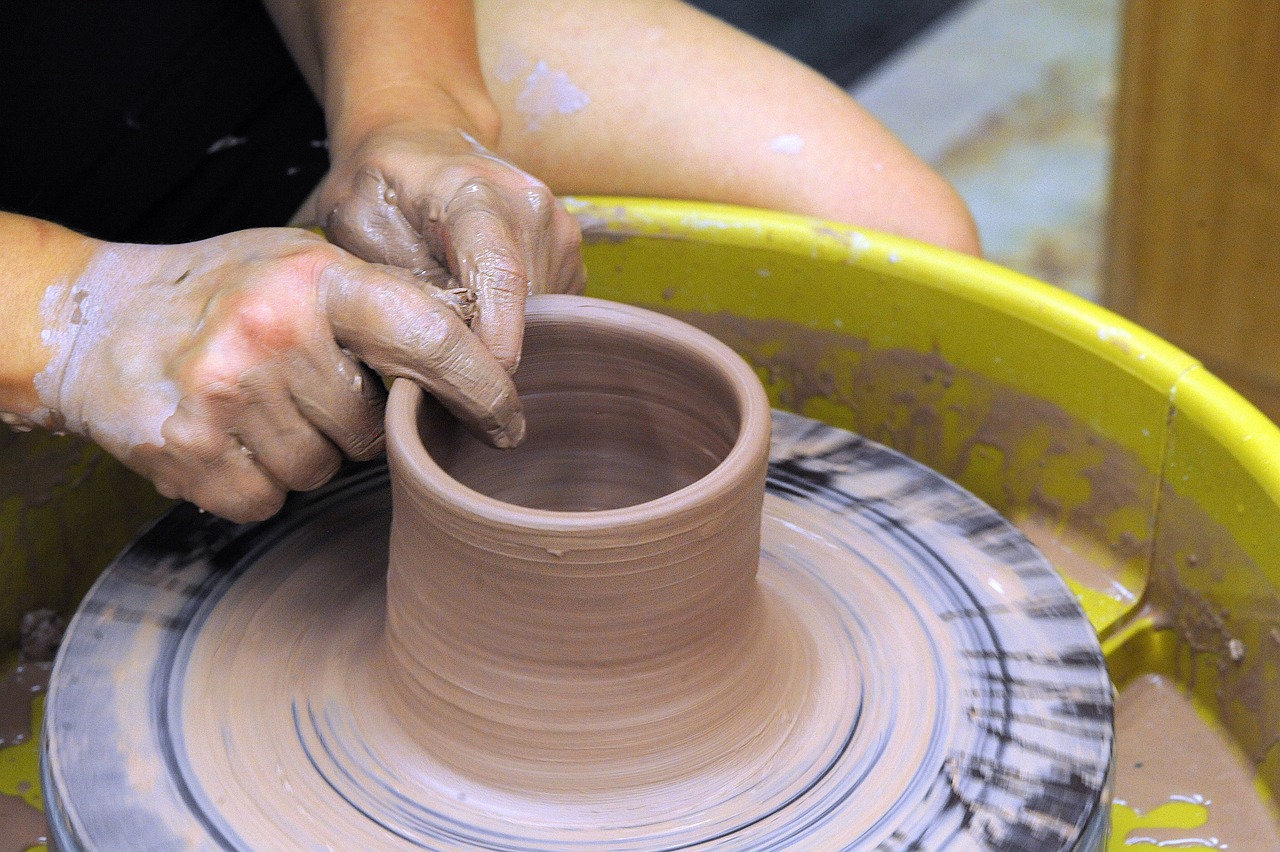
Spanish Talavera
Talavera pottery is a stunning representation of Spanish craftsmanship, originating from the town of Talavera de la Reina in the province of Toledo. This vibrant ceramic tradition dates back to the 16th century and has evolved over the centuries, becoming a hallmark of Spanish culture. The artistry involved in creating Talavera pieces is not just about aesthetics; it intertwines history, culture, and tradition, making each piece a story waiting to be told.
One of the most striking features of Talavera pottery is its distinctive glaze, which is often a bright white base adorned with intricate, colorful designs. The colors typically used in Talavera include deep blues, rich yellows, and vibrant greens, all of which are applied using a technique that has been passed down through generations. The artisans use a method called majolica, where the clay is coated with a tin glaze that creates a smooth, reflective surface. This technique not only enhances the beauty of the pottery but also makes it more durable.
Talavera pottery is not just decorative; it serves various functional purposes. From tableware to decorative tiles, the versatility of Talavera is evident in its widespread use. For example, many households in Spain still use Talavera plates and bowls for everyday meals, bridging the gap between functionality and artistry. The intricate designs often depict scenes from nature, mythology, or traditional Spanish motifs, making each item a unique piece of art.
Moreover, the process of creating Talavera pottery is labor-intensive and requires a high level of skill. Artisans typically follow these steps:
- Preparation of Clay: The clay is carefully selected and prepared to ensure the right texture and consistency.
- Shaping: Each piece is shaped by hand or using molds, requiring precision and expertise.
- First Firing: The shaped clay is fired at high temperatures to harden it.
- Glazing: After cooling, the pottery is glazed with the tin glaze, which gives it that characteristic shine.
- Decoration: Designs are painted onto the glazed surface, often using traditional patterns.
- Final Firing: The decorated pieces are fired again to set the glaze and colors.
This meticulous process not only showcases the artisans' skills but also reflects their deep connection to their cultural heritage. Talavera pottery is often regarded as a symbol of Spanish identity, representing the fusion of indigenous and Moorish influences that characterize much of Spain's artistic landscape.
In recent years, there has been a resurgence of interest in traditional Talavera pottery, with contemporary artists and designers incorporating these age-old techniques into modern designs. This revival is not just about preserving the past; it's about reinterpreting it for a new generation, ensuring that the beauty of Talavera continues to thrive.
Q: What is Talavera pottery made from?
A: Talavera pottery is primarily made from locally sourced clay, which is then shaped, glazed, and fired to create beautiful ceramic pieces.
Q: How can I tell if my Talavera pottery is authentic?
A: Authentic Talavera pottery typically features a bright white glaze and vibrant colors, with intricate designs that reflect traditional Spanish motifs. Look for markings or labels from reputable artisans or workshops.
Q: Is Talavera pottery safe for food use?
A: Yes, Talavera pottery is generally safe for food use, but it's essential to check if the piece is food-safe, especially if it has been painted with non-toxic glazes.
Q: Can I use Talavera pottery in the oven or microwave?
A: It's best to avoid using Talavera pottery in the oven or microwave unless specified by the manufacturer, as extreme temperatures can cause the pottery to crack.
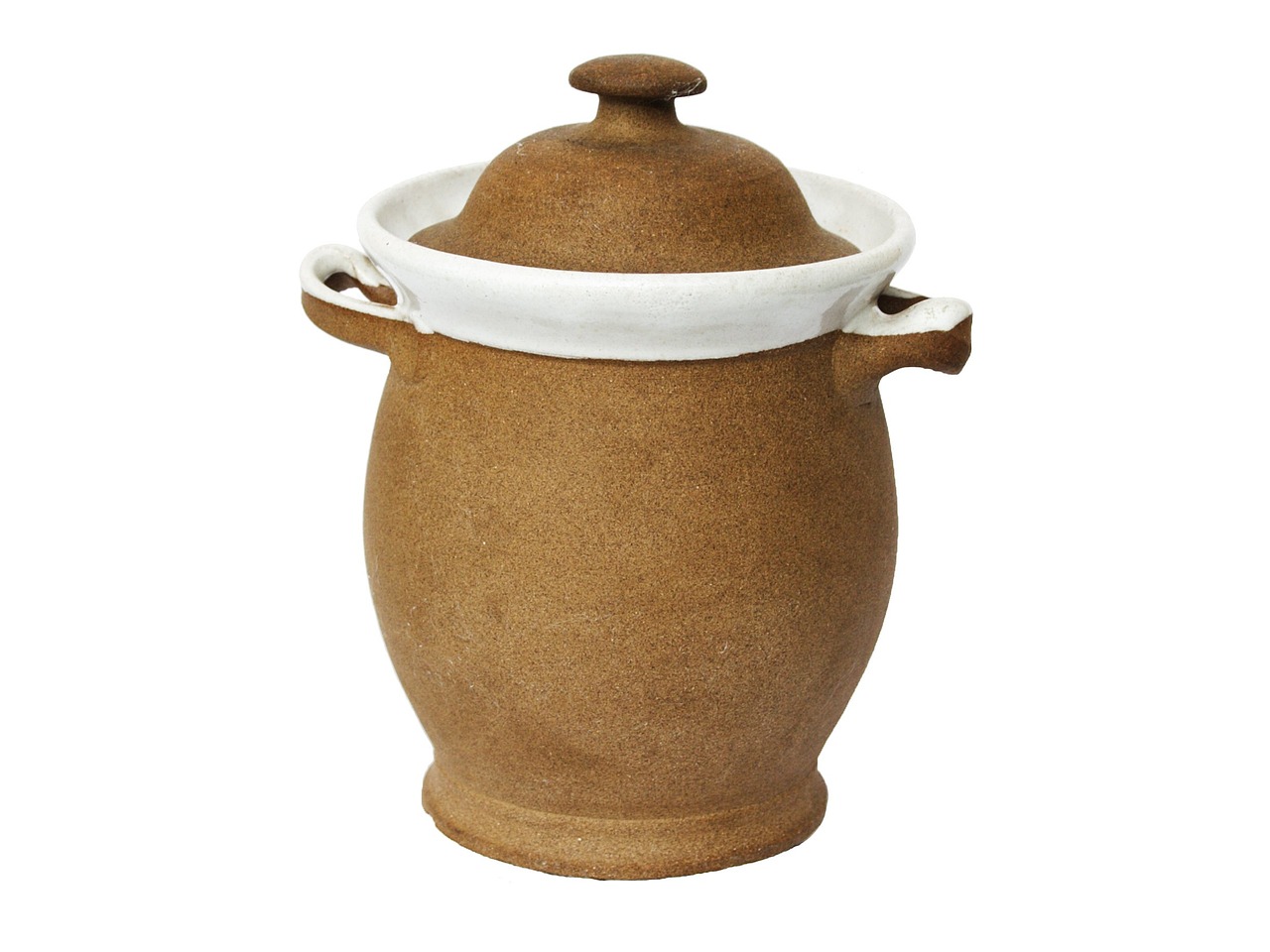
The Role of Pottery in Cultural Identity
Pottery is more than just a functional craft; it is a vibrant expression of cultural identity that tells stories, preserves traditions, and fosters community. Across the globe, different communities utilize pottery to convey their heritage and beliefs, transforming clay into a canvas of cultural narratives. Each piece of pottery is imbued with the spirit of its maker, reflecting not only their artistic skills but also the values and stories of their ancestors. Have you ever wondered how a simple bowl can represent an entire way of life? Let’s delve into this fascinating topic.
In many cultures, pottery is a vital part of rituals and ceremonies. For instance, in Native American communities, pottery is often used in sacred rituals, serving as a connection between the physical and spiritual worlds. The designs on these pots can symbolize important elements of their culture, such as nature, family, and spirituality. Each curve and line tells a story, making the pottery not just an object but a significant cultural artifact.
Furthermore, the techniques and materials used in pottery-making are often passed down through generations, creating a strong sense of continuity and belonging. For example, in Japan, the art of Raku pottery is not only a craft but also a spiritual practice deeply rooted in Zen Buddhism. The process of creating Raku pottery involves mindfulness and a connection to the earth, which reflects the cultural values of simplicity and harmony with nature.
Additionally, pottery serves as a medium for social expression. In many African communities, pottery is often decorated with symbols that represent social status, lineage, and community ties. The vibrant colors and intricate patterns are not merely decorative but are laden with meaning, allowing potters to communicate their identity and social narratives. For example, the use of specific colors or motifs can indicate a person's role within the community or commemorate significant life events.
As we explore the role of pottery in cultural identity, it's essential to recognize the impact of globalization. While traditional pottery techniques are being preserved, contemporary artisans are also blending these ancient practices with modern designs. This fusion creates a unique artistic expression that resonates with both local and global audiences. For instance, many potters today are experimenting with sustainable materials and innovative techniques, ensuring that their work remains relevant in a rapidly changing world.
In conclusion, pottery is a powerful medium that encapsulates the essence of cultural identity. It is a testament to the creativity and resilience of communities around the world. Whether through traditional forms or contemporary interpretations, pottery continues to be a vital expression of who we are and where we come from, connecting us to our past while shaping our future.
- What is vernacular pottery? Vernacular pottery refers to traditional pottery styles that are unique to specific cultures or regions, often reflecting local resources and cultural practices.
- How does pottery influence cultural identity? Pottery serves as a form of artistic expression that embodies the values, beliefs, and histories of communities, fostering a sense of belonging and continuity.
- Can contemporary pottery still reflect traditional techniques? Yes! Many modern potters are reviving traditional techniques while incorporating contemporary designs, creating a bridge between past and present.
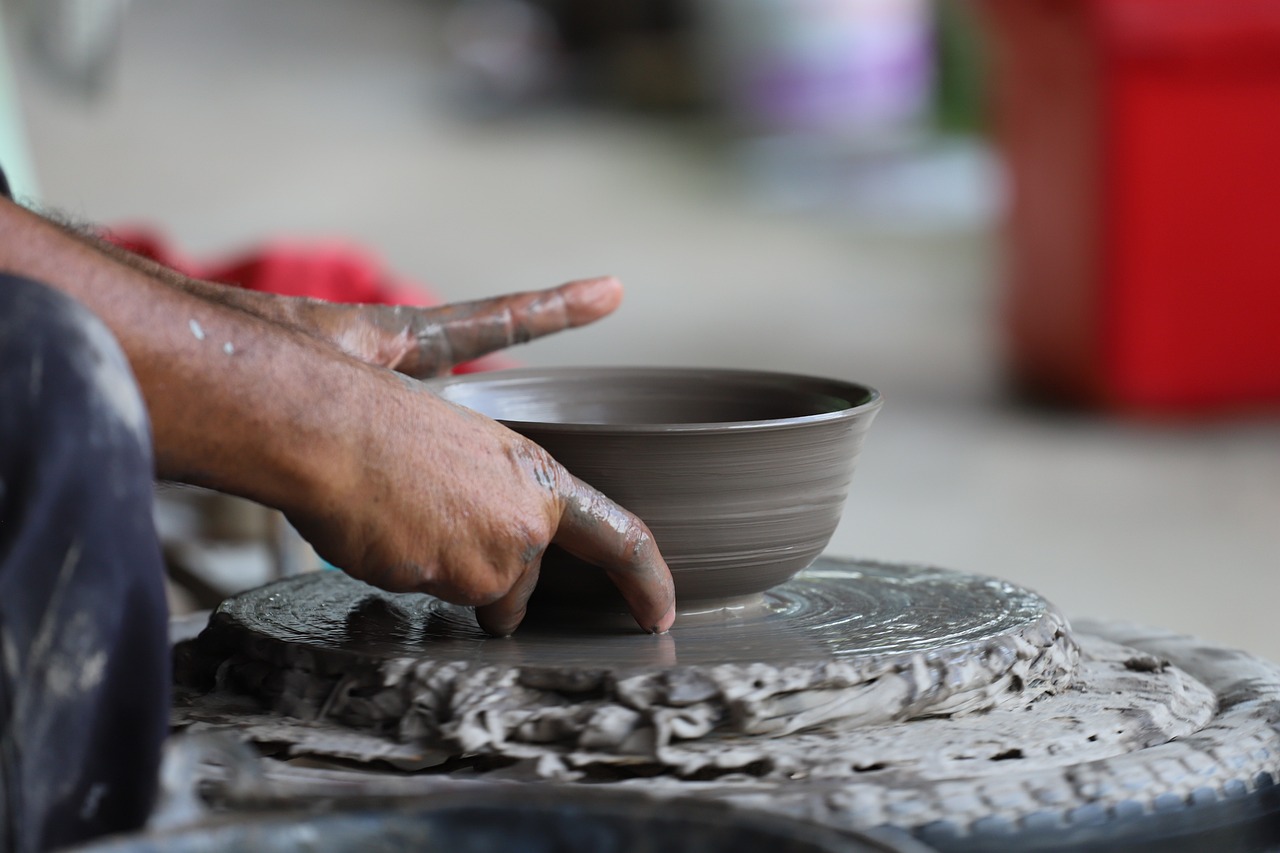
Contemporary Vernacular Pottery
In today's fast-paced world, where mass production dominates, the revival of is a breath of fresh air. Artists and potters are embracing traditional techniques while infusing modern aesthetics into their work. This blend of old and new not only preserves the rich heritage of pottery but also makes it relevant to today's audience. Imagine walking into a gallery filled with vibrant, handcrafted pieces that tell stories of generations past while also appealing to contemporary tastes. Isn't that a fascinating intersection of history and modernity?
Many contemporary potters are inspired by their cultural backgrounds, drawing from the styles and techniques of their ancestors. They often use local materials, ensuring that each piece is not only unique but also deeply connected to the land it comes from. This approach fosters a sense of community and sustainability, as artisans often collaborate with local suppliers and craftspeople. For example, some potters in the United States are reviving Native American pottery styles, using traditional methods and natural clays to create stunning works that honor their heritage.
Moreover, the rise of social media and online marketplaces has opened up new avenues for these artisans to showcase their work. Platforms like Instagram and Etsy allow them to reach a global audience, transforming their pottery into a viable source of income. This newfound visibility has led to a resurgence of interest in traditional techniques and styles, as consumers increasingly seek out authentic, handmade products. Who wouldn't want to own a piece of art that carries the weight of history along with a modern twist?
In addition to individual potters, there are also community initiatives and workshops aimed at teaching these traditional skills to a new generation. These programs often emphasize the importance of cultural heritage and the stories behind each piece. For instance, workshops in rural areas may focus on local techniques that have been passed down through generations, allowing participants to connect with their roots while creating something beautiful. The act of making pottery becomes a form of storytelling, bridging the gap between past and present.
As we look at the broader picture, it's evident that contemporary vernacular pottery is not merely about aesthetics; it’s about identity, sustainability, and community. The revival of these traditional techniques serves as a reminder of our shared human experience, where art and function intertwine. Whether it’s a simple bowl or an intricate vase, each piece carries the essence of the culture it represents, making it a timeless treasure. So, the next time you admire a handcrafted pottery piece, remember that it’s not just an object; it’s a story waiting to be told.
- What is vernacular pottery? Vernacular pottery refers to traditional pottery styles that are often specific to a particular culture or region, reflecting local materials, techniques, and aesthetics.
- How is contemporary vernacular pottery different from traditional pottery? Contemporary vernacular pottery combines traditional techniques with modern designs and influences, making it relevant to today's audience while preserving cultural heritage.
- Where can I find contemporary vernacular pottery? You can find contemporary vernacular pottery in local art galleries, craft fairs, and online marketplaces like Etsy and social media platforms.
- Why is pottery considered an important cultural expression? Pottery serves as a medium for expressing cultural identity, beliefs, and artistic traditions, making it a vital part of the heritage of many communities.
Frequently Asked Questions
- What is vernacular pottery?
Vernacular pottery refers to traditional ceramic styles that are created by local artisans, often using techniques passed down through generations. These pottery styles reflect the cultural heritage and practical needs of the communities that produce them, making them both functional and artistically significant.
- How does pottery reflect cultural identity?
Pottery serves as a powerful medium for expressing cultural identity. Each piece often tells a story, showcasing the beliefs, traditions, and artistic expressions of a community. For instance, specific colors, shapes, and designs may have symbolic meanings that are deeply rooted in the culture of the potters.
- What are some unique characteristics of African pottery?
African pottery is known for its rich history and vibrant symbolism. Styles vary significantly across regions, with techniques often including the use of natural pigments and intricate designs. For example, North African Berber pottery features bold colors and geometric patterns, while Sub-Saharan pottery emphasizes functionality for daily use.
- What distinguishes Asian pottery from other regions?
Asian pottery is incredibly diverse, ranging from delicate porcelain to robust stoneware. Traditional methods, such as wheel throwing and hand-building, play a significant role in defining these styles. Countries like China and Japan have long histories of pottery production, each with unique techniques and cultural contexts that influence their ceramics.
- Can you explain the significance of Italian Majolica pottery?
Italian Majolica is celebrated for its vibrant colors and intricate designs, often depicting scenes from mythology or nature. Its historical roots trace back to the Renaissance, and it remains an important part of Italian culture, showcasing the craftsmanship and artistic expression of contemporary potters.
- What is the role of pottery in contemporary society?
In contemporary society, pottery is experiencing a revival as modern artisans blend traditional techniques with innovative designs. This resurgence highlights the importance of keeping the craft alive while appealing to modern aesthetics, allowing pottery to remain relevant and cherished in today's world.



















